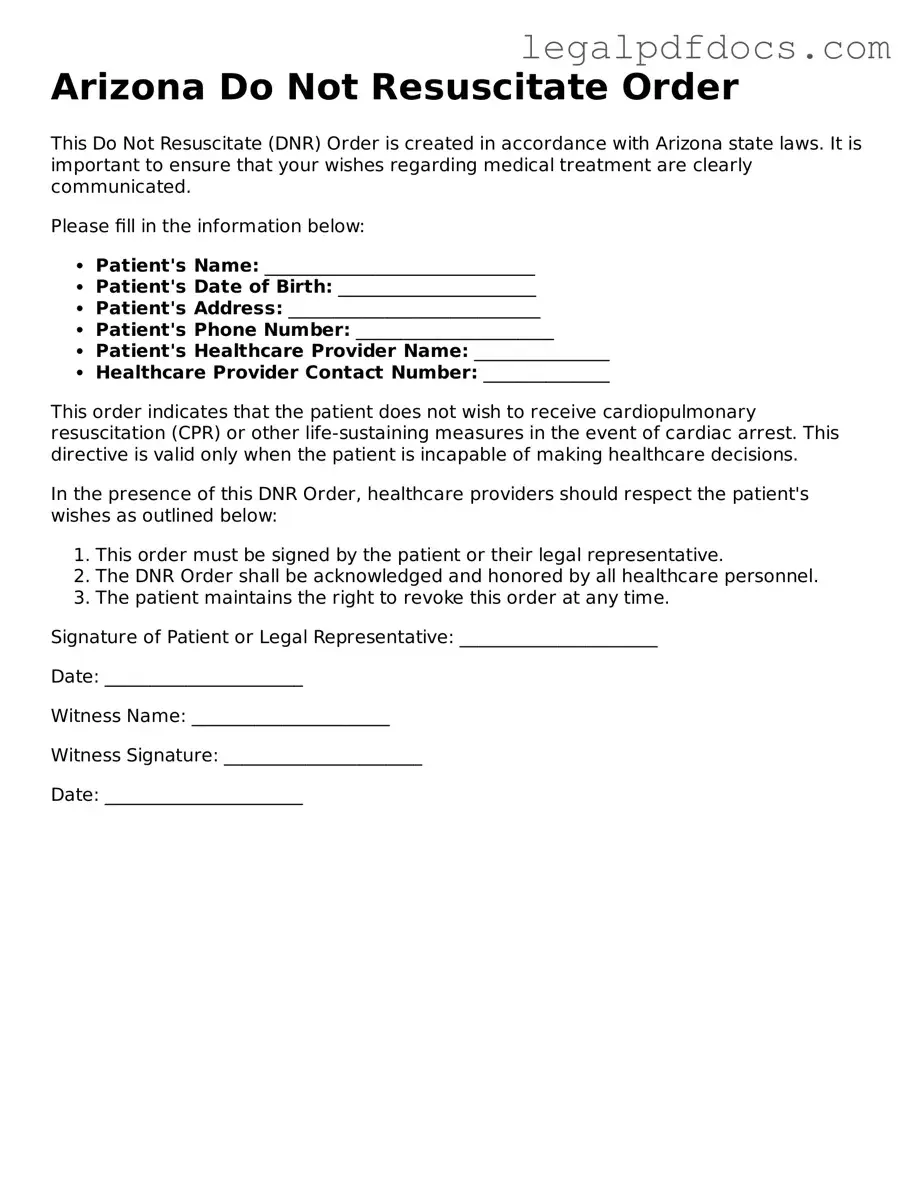Official Do Not Resuscitate Order Form for Arizona
A Do Not Resuscitate (DNR) Order is a legal document that allows individuals to express their wishes regarding medical treatment in the event of cardiac or respiratory arrest. In Arizona, this form ensures that medical personnel respect a person's decision not to receive life-saving measures. Understanding this form is crucial for those who wish to make their healthcare preferences known.
If you're ready to take this important step, fill out the form by clicking the button below.
Open Do Not Resuscitate Order Editor Here
